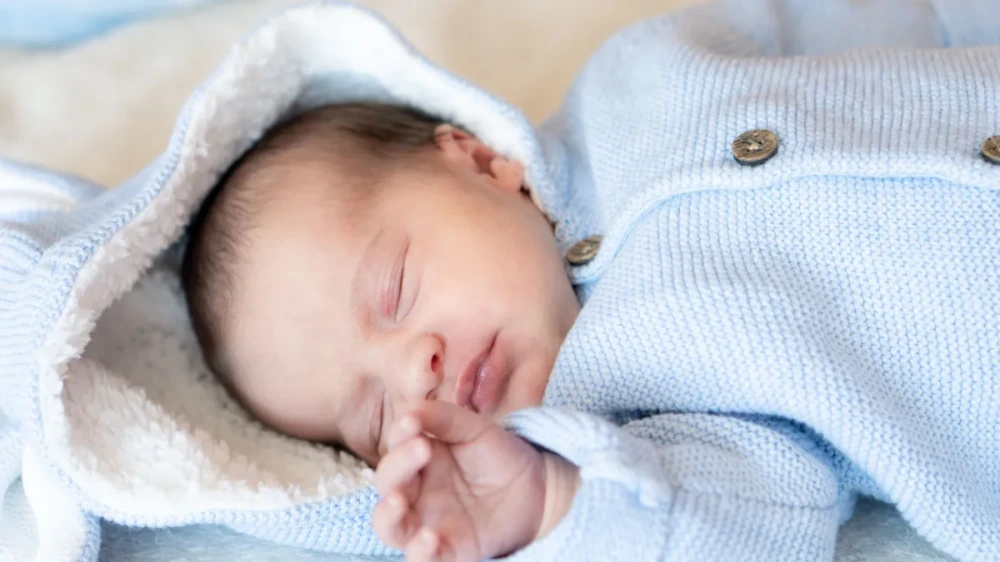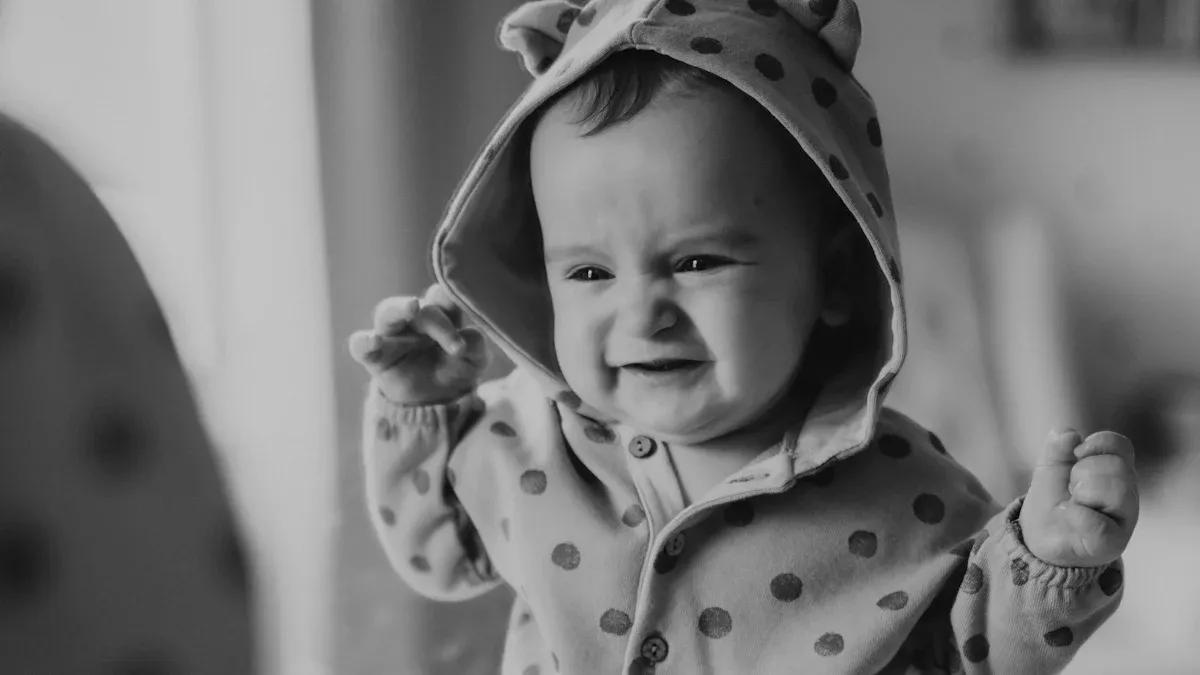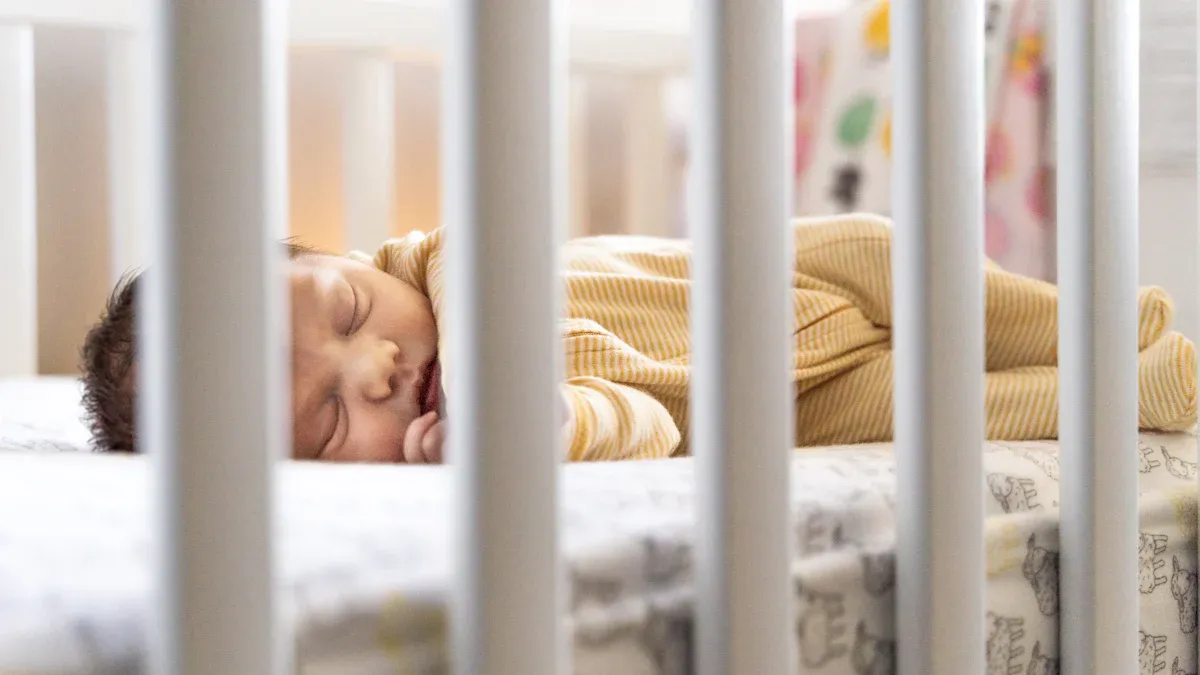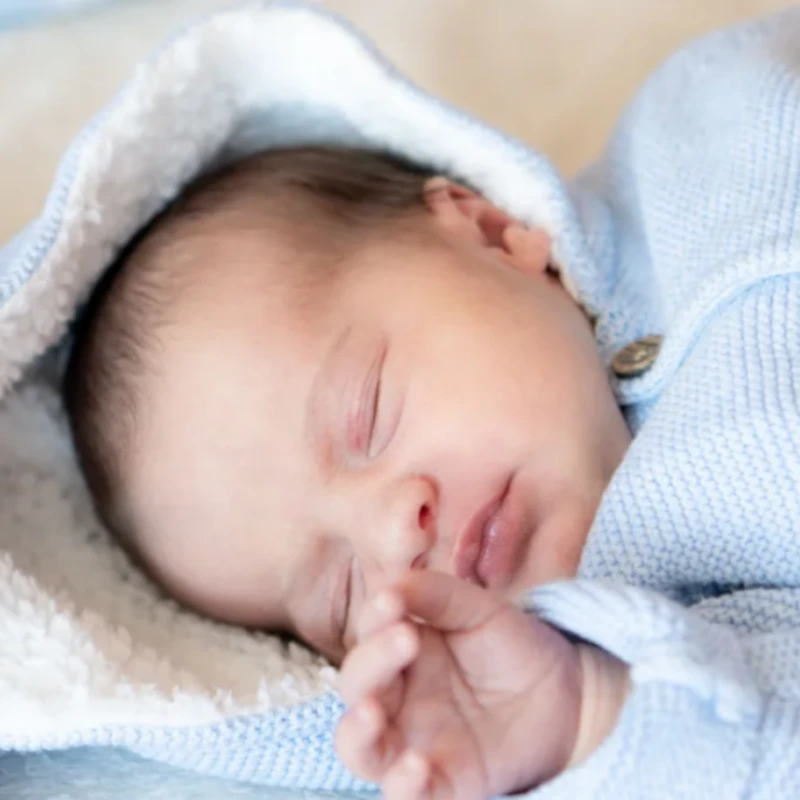
Are hooded pajamas safe for your baby? The answer is no—they are not safe and should be avoided for sleep. Pediatric safety guidelines stress that you must keep your infant’s head and face uncovered during sleep. This helps reduce the risk of suffocation, overheating, and Sudden Infant Death Syndrome (SIDS).
Experts, including the American Academy of Pediatrics, offer this advice:
Keep your baby’s head and airway free from any covering during sleep.
Do not use hooded pajamas or hats for an infant while sleeping.
You have many safe, comfortable options for your baby’s sleepwear. You can feel confident knowing that following this advice helps protect your infant.
Key Takeaways
Hooded pajamas are unsafe for babies during sleep because they can cover the face and cause suffocation or overheating.
Experts recommend keeping your baby’s head and face uncovered to reduce the risk of sudden infant death syndrome (SIDS).
Choose snug-fitting, breathable sleepwear like footed pajamas or sleep sacks to keep your baby warm and safe.
Always dress your baby in one more layer than you would wear and keep the room temperature between 68 and 72 degrees Fahrenheit.
Remove hoods and hats before sleep, and avoid loose blankets or weighted clothing to create a safe sleep environment.
Are Hooded Pajamas Safe for Babies?

When you ask, “Are hooded pajamas safe for babies?” you want clear, trustworthy answers. Experts agree that hooded pajamas are not safe for infants during sleep. You need to know the reasons behind this advice so you can make the best choices for your baby’s safety and comfort.
Suffocation and Overheating Risks
You might think hooded pajamas look cozy, but they can create serious risks for your infant. Here are the main dangers:
Loose or bulky pajamas, especially those with hoods, can cover your baby’s nose or mouth. This increases the risk of suffocation during sleep.
Babies cannot move clothing away from their faces if it slips or bunches up. This makes hooded clothing for sleep especially dangerous.
Overheating is another major concern. Babies are sensitive to temperature changes and can overheat quickly if you dress them in too many layers or cover their heads.
The risk of overheating can lead to discomfort, restlessness, and even increase the chance of sudden infant death syndrome (SIDS).
Safe sleep guidelines recommend snug-fitting pajamas without loose parts. Breathable fabrics like cotton or merino wool help prevent overheating and keep your infant comfortable.
You should always monitor the room temperature. The ideal range for babies is between 68 and 72 degrees Fahrenheit.
Tip: Dress your baby in one more layer than you would wear in the same room. Avoid hats, hoods, or any head coverings during sleep to prevent overheating and suffocation.
SIDS and Medical Advice
Medical experts and organizations like the American Academy of Pediatrics have clear recommendations to reduce the risk of SIDS and other sleep-related dangers:
Never use hoods, hats, or any head coverings on your infant during sleep. These items can cause suffocation and increase the risk of overheating.
Dress your baby in light, comfortable sleepwear. Use sleep sacks or footed pajamas instead of loose blankets or hooded pajamas.
Keep your baby’s face and head uncovered at all times while sleeping. This helps prevent overheating and lowers the risk of sudden infant death syndrome.
Place your infant on a firm mattress with a fitted sheet. Remove all loose bedding, pillows, and toys from the sleep area.
Avoid weighted sleepwear or any clothing that restricts your baby’s movement or covers the face.
Note: Ignoring safe sleepwear guidelines can increase the risk of SIDS, suffocation, and other serious safety hazards. Always follow the latest recommendations from pediatricians and sleep safety experts.
Parents often ask what type of sleepwear is best for infants. The answer is simple: choose snug-fitting, breathable pajamas without hoods or loose parts. Footed pajamas and sleep sacks are popular because they keep your baby warm without the risks that come with hoods or loose blankets.
By following these guidelines, you help create a safe sleep environment for your baby. You lower the risk of overheating, suffocation, and SIDS, giving your infant the best chance for healthy, restful sleep.
Friendtex Hooded Pajamas for Kids and Adults
Features and Customization
When you choose Friendtex hooded pajamas for your child or yourself, you get more than just sleepwear. Friendtex offers a wide range of customization options to match your needs. You can select from soft flannel, breathable cotton, cozy fleece, or bamboo fabrics.
Each material suits different climates and comfort preferences. For children, you can pick playful prints, gentle zippers, and adjustable cuffs. These pajamas also feature reinforced knees and roomy fits, making them perfect for active play or relaxing at home.
If you want something unique, Friendtex lets you add logos, embroidery, or special patterns. You can choose colors and sizes for every age and gender. Adults enjoy options like body-shaping cuts, elastic waists, and seasonal prints.
Friendtex supports both small and large orders, so you can customize pajamas for your family or your business. Every detail, from hang tags to packaging, can reflect your personal style or brand identity.
Friendtex pajamas use OEKO-TEX certified fabrics for children, ensuring they are free from harmful chemicals and safe for sensitive skin.
Comfort and Style for All Ages
You will notice the comfort of Friendtex hooded pajamas as soon as you put them on. Users praise the softness and quality of the fabrics.
The hooded design adds warmth and a touch of style, making these pajamas a favorite for lounging or casual wear. Children love the playful prints and cozy feel, while adults appreciate the tailored fit and modern patterns.
The pajamas include features like secure zippers, adjustable cuffs, and reinforced patches for extra durability. Breathable, hypoallergenic materials keep you comfortable, even if you have sensitive skin.
Friendtex designs pajamas for every stage, from older children to teens and adults, with options that support mobility and comfort. Customer reviews highlight satisfaction with both comfort and style, making Friendtex a trusted choice for families and businesses alike.
How to Dress a Baby for Sleep?

Safe Sleepwear Alternatives
When you dress your baby for sleep, you want to keep them safe and comfortable. The best sleepwear for babies includes footed pajamas, sleep sacks, and snug-fitting clothing made from lightweight and breathable fabrics.
These options help prevent overheating and reduce the risk of suffocation. Avoid loose blankets, hats, or any items that could cover your baby’s face during sleep.
Here are some safe alternatives to consider:
Footed pajamas keep your baby warm without extra blankets.
Sleep sacks or wearable blankets provide warmth while allowing free movement.
Onesies made from breathable materials like cotton or bamboo help regulate temperature.
Infant sleep clothing should fit snugly but not tightly, reducing the chance of fabric covering the face.
Friendtex offers a range of baby nightwear made from natural, hypoallergenic, and breathable fabrics. You can choose from bamboo, organic cotton, muslin, and linen pajamas. These materials keep your baby comfortable in every season and protect sensitive skin.
Tip: Always check for features like covered zippers and secure snaps. Avoid loose buttons or ties to prevent choking hazards.
Sleep Safe Tips for Babies
You can follow these sleep safe tips for babies to create a secure sleep environment:
Place your baby on their back on a firm sleep surface, such as a crib or bassinet with a fitted sheet.
Keep the crib free of pillows, blankets, stuffed animals, and bumpers.
Dress your baby in one more layer than you would wear in the same room.
Monitor your baby’s temperature by feeling their chest or back. Signs of overheating include sweating, flushed cheeks, or damp hair.
Stop swaddling once your baby starts trying to roll over.
Never use weighted blankets or hats during sleep.
Reassess sleepwear with seasonal changes to ensure comfort.
A table can help you remember what to look for when choosing sleepwear:
Feature | Why It Matters |
|---|---|
Breathable fabric | Helps prevent overheating and skin irritation |
Snug fit | Reduces suffocation risk |
Easy closures | Makes diaper changes quick and safe |
No loose parts | Prevents choking and strangulation hazards |
By following these guidelines on how to dress a baby for sleep, you help your child sleep safely and comfortably every night.
Myths About Hooded Pajamas and Baby Sleep
“My Baby Gets Cold Without a Hood”
Many parents worry that their baby will get a cold at night without a hood. You want your child to feel warm and safe, but medical professionals advise against using hoods or hats for sleep. Babies regulate their body temperature through their heads and faces. Covering these areas can cause overheating, which increases the risk of SIDS.
Babies do not need hats or hoods indoors. They can overheat more easily than adults.
Hats and hoods can slip off and cover the face, leading to suffocation.
The safest way to keep your baby warm is by dressing them in light layers and using a sleep sack or wearable blanket.
Experts recommend keeping the room temperature between 68 and 72 degrees Fahrenheit.
To check if your baby is warm enough, feel their hands, feet, or nose. If they feel cool, add a layer of clothing instead of a hat.
Pediatricians and sleep consultants agree: always remove head coverings before putting your baby to sleep. This simple step helps reduce the risk of overheating and suffocation.
“Hooded Pajamas Are Fine for Naps”
Some parents believe that hooded pajamas are safe for naps, but this is a dangerous myth. Even during short periods of sleep, hoods can pose a serious risk. Personal stories and expert advice show that hoods can slip over a baby’s face, blocking their breathing and increasing the risk of suffocation.
Hooded pajamas are often too warm for sleep, raising the risk of overheating.
Community guidelines and medical experts recommend using hooded clothing only for supervised play or outdoor activities, not for sleep.
The safest sleepwear for your baby includes fitted pajamas, sleep sacks, or wearable blankets without hoods or loose parts.
Always choose sleepwear that keeps your baby’s head and face uncovered. This simple choice helps protect your child during every nap and nighttime sleep.
Conclusion
You want your baby to sleep safely and comfortably. Hooded pajamas are not safe for infants during sleep. Experts recommend you use snug, hood-free pajamas made from soft, breathable fabrics. Choose sleepwear that fits well and keeps your baby’s head uncovered.
Friendtex designs baby pajamas with safety and quality in mind, using eco-friendly materials and certified safe fabrics. Explore safe options and trust your instincts as you make the best choices for your child’s sleep.
FAQ
Are hooded pajamas safe for newborns?
No, you should not use hooded pajamas for newborns. Hoods can cover your baby’s face and increase the risk of suffocation or overheating. Always choose snug, hood-free sleepwear for your infant.
What is the safest sleepwear for babies?
You should use footed pajamas, sleep sacks, or snug-fitting onesies made from breathable fabrics. These options keep your baby warm and comfortable without extra risk. Avoid loose blankets, hats, or hoods during sleep.
Can my baby wear hooded pajamas while supervised?
Yes, you can dress your baby in hooded pajamas for supervised play or photos. Always remove the hood before naps or bedtime. Never leave your baby unattended in hooded clothing.
How do I know if my baby is too hot at night?
Feel your baby’s chest or back. If the skin feels sweaty or hot, your baby may be overheating. Signs include flushed cheeks or damp hair. Adjust clothing layers as needed to keep your baby comfortable.


